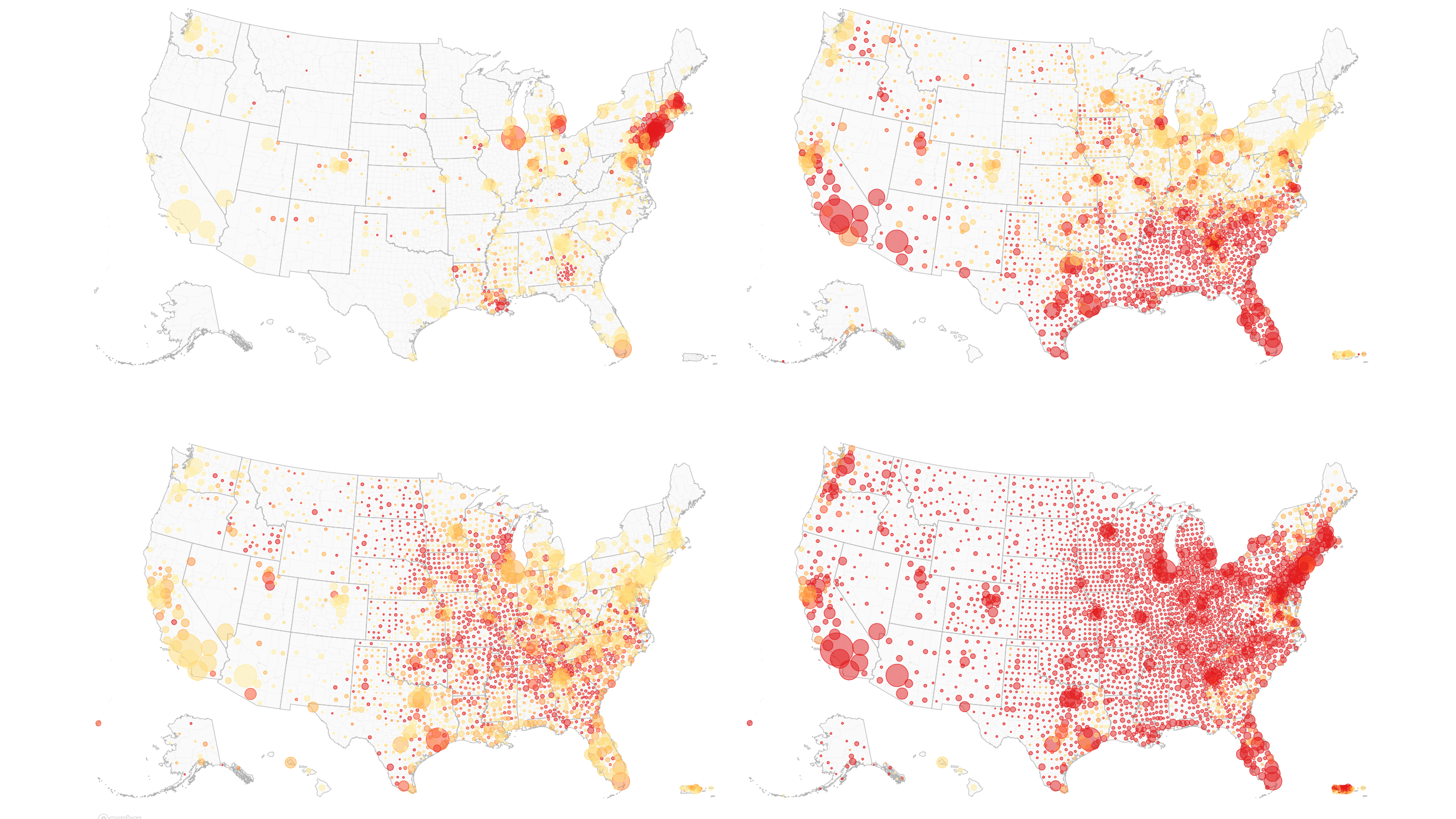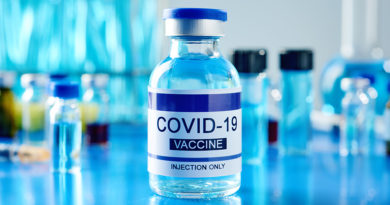COVID conspiracy: Why people don’t believe in the deadly pandemic

This story has been updated with new numbers from Johns Hopkins University.
I’m USA TODAY editor-in-chief Nicole Carroll, and this is The Backstory, insights into our biggest stories of the week. If you’d like to get The Backstory in your inbox every week, sign up here.
On Wednesday, more than 100,000 people were hospitalized due to the coronavirus. The same day, 2,804 COVID-19 deaths were recorded, the most ever in one day. Still, many people think the virus is no worse than the flu. I wanted to understand why.
About 200 people wrote to me. I read each one and shared them with our journalists covering the pandemic.
Many said they believe the virus is real but are worried about their jobs and their bills and how shutdowns have been handled inconsistently. Others are angry at politicians who plead for people to stay home but then get spotted at events. They don’t deny the severity of the virus, they are frustrated with the country’s response.
Then there are those who truly believe the virus is “no worse than a cold” or “another strain of the flu” unduly panicking “knee-jerk sheeple.”
The maddening commonality of this group: They base their beliefs on false information, social media rumors or the fact that they don’t personally know anyone who has had COVID-19, so it can’t be that bad.
Data maps:How a third wave of COVID-19 engulfed the US
I say this constantly: Our job is to spread truth. Many letters repeated the same false claims, the same bad information. So I asked our team of health journalists to take on the most stubborn misconceptions and set the record straight. Here we go.
CLAIM: Numbers of COVID-19 cases are inflated because of repeat testing. For example, if someone gets tested seven days in a row and tests positive each time, they are all counted.
TRUTH: No matter how many times you test positive, you will only be counted once in official numbers. “All positive COVID-19 cases are reported to state health departments and the Centers for Disease Control and Prevention,” reports health writer Ken Alltucker. “Labs, doctors’ offices, urgent care and other testing sites collect a person’s identifiable information, such as ZIP code and date of birth. This information allows public health agencies to track results and trace a person’s contacts.
“A person who tests positive is classified as a single case, even if the person tests positive multiple times, according to the Council of State and Territorial Epidemiologists case definition adopted Aug. 5.”
And what about those who test positive, and then negative after, some asked. Are they counted?
“It’s common for someone to test positive using a lab test. When the person gets retested (say a week or two later) and they test negative, it means they no longer have detectable levels of genetic material of the virus,” Alltucker said. “It does not mean it was a fake case. They were positive, the virus shedded and detectable levels disappeared.
”In such a scenario, it would still count as a case in the totals.”
CLAIM: Most people who die of COVID-19 are older; younger people don’t have to worry. “The real question to me isn’t why so many people take this seriously,” wrote a 34-year-old man from New York, “it’s why anyone under the age of 60 is at all.”
TRUTH: More than 50,000 people under the age of 64 have died from COVID-19 as of Dec. 2, according to the CDC.
“Older adults face greater risk for severe illness or death from COVID-19,” Alltucker said. “However, others with underlying health conditions such as heart disease, cancer, obesity or diabetes also face higher risk of sickness or death.
“While death rates are much lower among young adults, research shows they are not without risk. A recent preprint study by Harvard and Yale researchers found COVID-19 has surpassed opioid overdoses as the leading cause of death of adults ages 25 to 44.”
We also know that young people can have COVID-19 but not show symptoms. And they can pass the virus on to more vulnerable populations.
CLAIM: Hospitals are inflating COVID-19 death numbers to get more money.
TRUTH: Hospitals do get an add-on payment from Medicare to treat the influx of COVID-19 patients as part of coronavirus relief legislation. However, this has nothing to do with how deaths are classified, and doctors are angered by the accusation.
“The hospital may receive more money for COVID-19 patients, but doctors are paid the same salary no matter how they treat and they’re the ones who ultimately certify the cause of death, not hospital administrators,” Dr. Mangala Narasimhan, director of critical care services at Northwell Health in New Hyde Park, New York, told health reporter Adrianna Rodriguez.
“I want to strangle people who say that (COVID-19 numbers are exaggerated) because we’re fighting this battle every day,” Narasimhan said.
Dr. Amesh Adalja is an infectious disease physician and senior scholar at the Johns Hopkins Center for Health Security. He told Rodriguez the extra 20% bump doesn’t compensate for the procedures rescheduled or cancelled due to the influx of COVID-19 patients. Hospitals are still losing money.
“I’ve filled out hundreds (of death certificates) in my career,” Adalja said. “It’s insulting that people think we (misclassify death certificates), including the president who made that same comment.”
CLAIM: If you look at the number of COVID-19 deaths compared with the U.S. population, it’s a very small percentage, not enough to worry about. “There simply are not enough sick and dead people to impress much of the population,” a Cleveland man wrote.
TRUTH: “While nearly 270,000 deaths may not seem like a lot compared to the 330 million people living in the United States, Adalja argues that it’s 270,000 more people who could still be alive if not for COVID-19,” Rodriguez reported Wednesday.
“The number of deaths that are occurring right now is an aberration. It’s not normal,” he said. “If this isn’t such a big deal then why are there portable morgues in El Paso?”
CLAIM: The virus is going to do what it is going to do. We cannot stop it; we cannot slow it. It’s just going to have to run its course. Protect the vulnerable and let everyone else live life.
TRUTH: Patient safety reporter Karen Weintraub takes this one. We’re not helpless, she says.
“Today, although scientists don’t know everything they’d like to, they do understand enough about this virus to control it,” she said. “It’s clear, for instance, that the virus that causes COVID-19 is a respiratory virus, so people get infected mainly by breathing it in. So if people can avoid being close to someone who is exhaling viral particles, they won’t get sick. This scientific knowledge gives us power to protect ourselves.”
As far as protecting the vulnerable and letting everyone else live normally?
“That’s an enviable idea,” she said, “and something that has essentially been tried across the United States, Brazil and a few other countries, unfortunately with disastrous results.
“Even if you are young and healthy and not overweight and not Black or Native American or part of another high-risk group, you probably are in close contact with someone who is. Or only one or two steps removed from someone who is. Roughly 40% of the American population is obese, over 65, or has a medical condition that predisposes them to be at higher risk for a serious COVID-19 infection.”
When the USA TODAY Editorial Board met recently with infectious disease expert Dr. Anthony Fauci, he was fed up with those who don’t take the virus seriously. “This is real,” he said.
“And if the divisiveness is so severe that people don’t think it’s real when people are flooding hospitals and dying at a rate that we haven’t seen with a disease of this type in 102 years, I hope that’s enough of a stimulus for us to drop back as a nation and say, ‘Hey, folks, we’ve got to start talking to each other about what this divide is between us.’”
So we’ve talked, we know what major factors fuel the divide: Misinformation. Conspiracy theories. Social media rumors.
And we’ve listened. I only hope the deniers do as well.
The CDC predicts the U.S. could reach 450,000 deaths by February.
Backstory: Anthony Fauci has had it with people who think COVID-19 is no worse than the flu
Backstory: We investigated claims of voter fraud in the election. Here’s what we found.
Nicole Carroll is the editor-in-chief of USA TODAY. Reach her at EIC@usatoday.com or follow her on Twitter here. Thank you for supporting our journalism. You can subscribe to our print edition, ad-free experience or electronic newspaper replica here.


